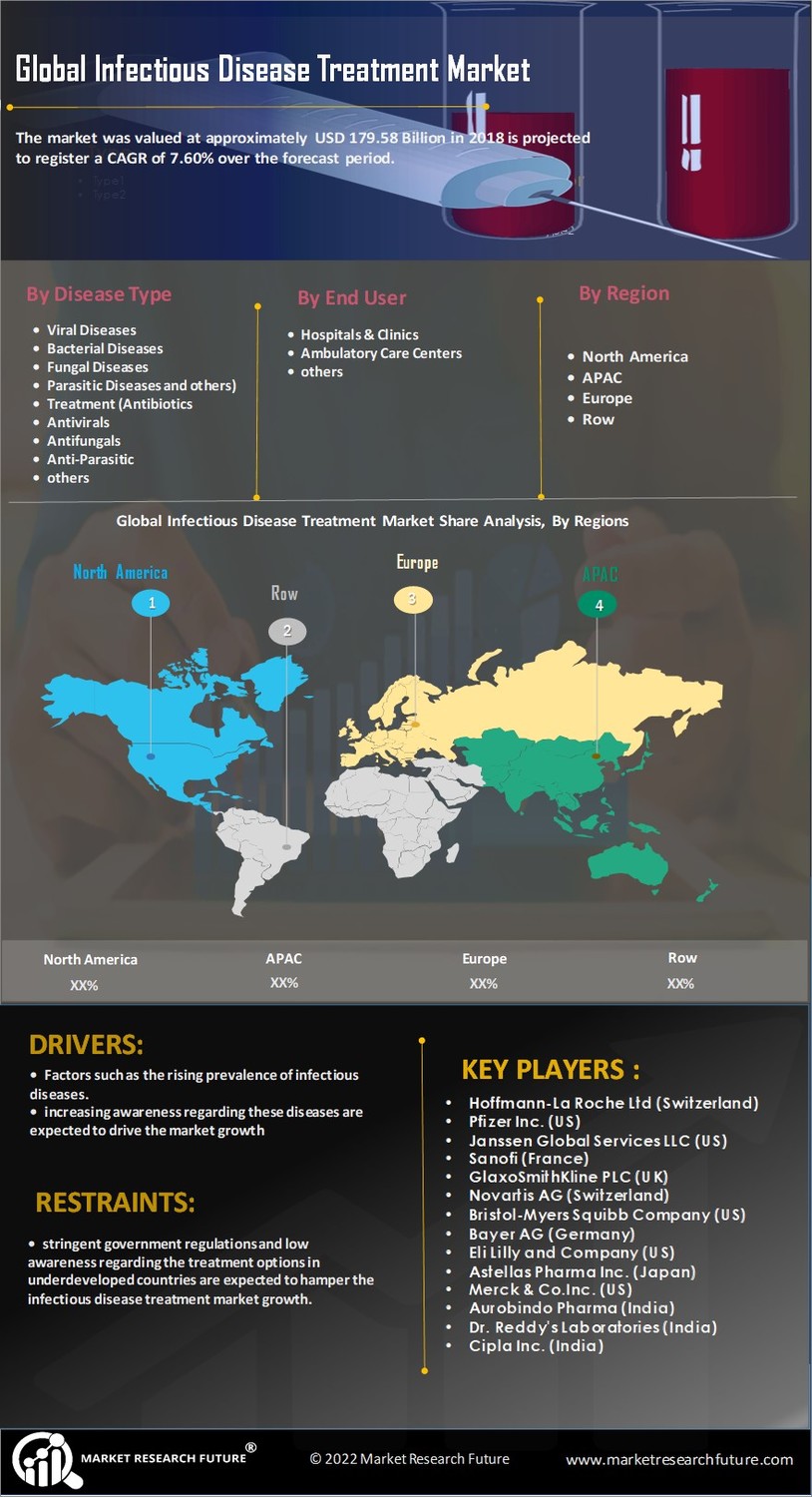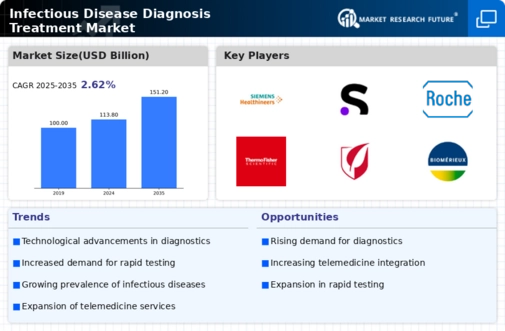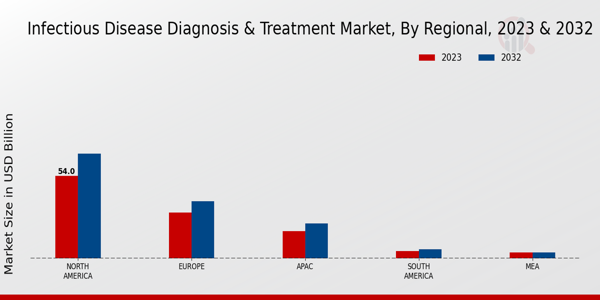Market Growth Projections
The Global Infectious Disease Diagnosis Treatment Market Industry is poised for substantial growth, with projections indicating a market value of 113.8 USD Billion in 2024 and an anticipated increase to 151.2 USD Billion by 2035. This growth trajectory suggests a compound annual growth rate (CAGR) of 2.62% from 2025 to 2035. The market's expansion is driven by various factors, including technological advancements, government initiatives, and the rising burden of infectious diseases. As the industry evolves, it is essential to monitor these trends to understand their implications for future market dynamics.
Emerging Infectious Diseases
The emergence of new infectious diseases poses a significant challenge and opportunity for the Global Infectious Disease Diagnosis Treatment Market Industry. Pathogens such as novel viruses and antibiotic-resistant bacteria necessitate the development of innovative diagnostic and treatment solutions. The ongoing threat of emerging diseases underscores the importance of robust surveillance systems and rapid response capabilities. As healthcare systems adapt to these challenges, the demand for advanced diagnostics and effective treatments is likely to increase. This dynamic environment may further propel market growth, reflecting the industry's responsiveness to evolving infectious disease threats.
Rising Global Disease Burden
The increasing prevalence of infectious diseases globally drives the Global Infectious Disease Diagnosis Treatment Market Industry. Factors such as urbanization, climate change, and global travel contribute to the spread of pathogens. For instance, the World Health Organization reports that infectious diseases account for a significant portion of global morbidity and mortality. This growing disease burden necessitates advanced diagnostic tools and treatment options, propelling market growth. In 2024, the market is projected to reach 113.8 USD Billion, reflecting the urgent need for effective diagnosis and treatment strategies to combat these diseases.
Growing Awareness and Education
Rising awareness and education regarding infectious diseases contribute to the expansion of the Global Infectious Disease Diagnosis Treatment Market Industry. Public health campaigns and educational programs aim to inform communities about prevention, early detection, and treatment options. This increased awareness leads to higher demand for diagnostic services and treatment solutions. For example, initiatives promoting vaccination and hygiene practices have proven effective in reducing disease transmission. As individuals become more informed about infectious diseases, the market is expected to experience sustained growth, driven by the need for accessible and effective diagnostic and treatment options.
Government Initiatives and Funding
Government initiatives aimed at combating infectious diseases play a crucial role in shaping the Global Infectious Disease Diagnosis Treatment Market Industry. Increased funding for research and development, public health campaigns, and vaccination programs are essential components of these initiatives. For instance, various governments allocate substantial budgets to enhance healthcare infrastructure and improve disease surveillance systems. This financial support fosters innovation in diagnostic and treatment modalities, thereby stimulating market growth. The commitment to addressing infectious diseases is likely to sustain the market's expansion, with a projected CAGR of 2.62% from 2025 to 2035.
Technological Advancements in Diagnostics
Innovations in diagnostic technologies significantly enhance the capabilities of the Global Infectious Disease Diagnosis Treatment Market Industry. The development of rapid diagnostic tests, molecular diagnostics, and point-of-care testing has revolutionized the speed and accuracy of disease detection. For example, the integration of artificial intelligence in diagnostic tools allows for quicker analysis and improved patient outcomes. These advancements not only facilitate early detection but also streamline treatment protocols, thereby increasing market demand. As the industry evolves, the market is expected to grow, with projections indicating a rise to 151.2 USD Billion by 2035.













